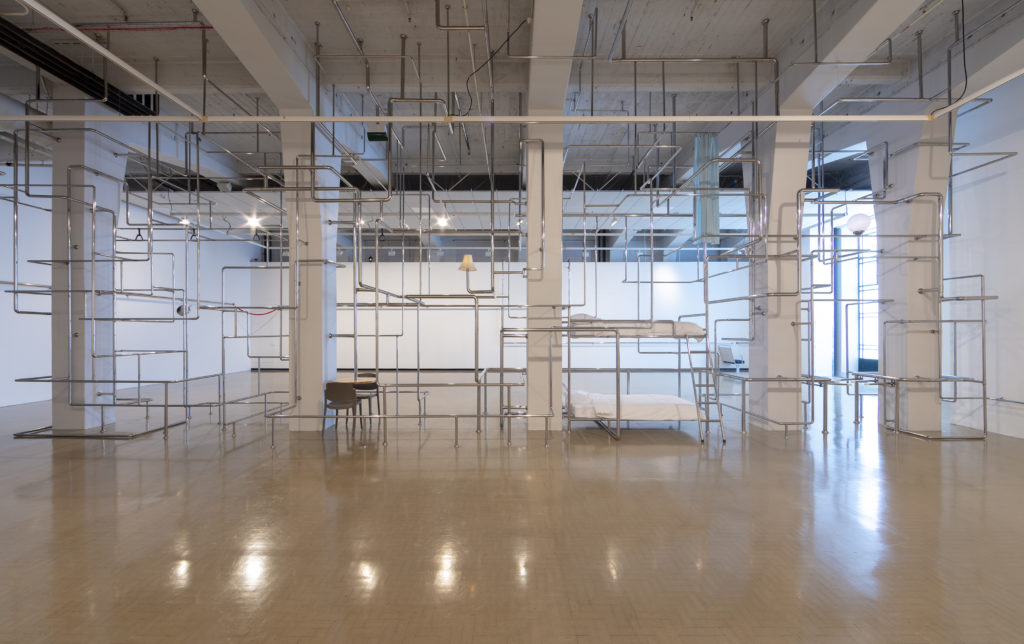Yona Lee makes large, maze-like installations. Hundreds of metres of stainless-steel pipe are cut and welded to form elaborate linear structures, bisecting and transforming gallery spaces and the activities that take place there. By incorporating a miscellany of surprising urban and domestic fixtures, Lee infuses her pipe structures with an everyday surrealism.
The Auckland-based, New Zealand–Korean artist’s work can be read in many ways: as structure or system, as minimalist or maximalist, as serious or funny, as aggressive or playful, as authoritarian or utopian, as utilitarian or pointless, as site-specific or self-contained, as light touch or heavy duty, as sculpture or drawing, and even as music. (A classical cellist, Lee has previously ‘played’ her sculptures.)
Lee's work for City Gallery is the fifth in her In Transit series, following iterations at SeMA Nanji and Alternative Space Loop (both in Seoul, 2016), Auckland’s Te Tuhi (2017), and Sydney’s Art Gallery of New South Wales (2018).
Each work starts with Lee mapping the gallery space, and analysing its particular spatial and social dynamics. At City Gallery, In Transit takes sonata form. It’s staged as three interconnected structures spread across two downstairs galleries and the corridor that links them to the Auditorium. Form follows function as the sculpture traces the movement of utility pipes and tubes through and between these spaces. As it snakes around columns, behind walls, through vents and ceilings, Lee’s work draws attention to functional dimensions of gallery architecture normally rendered invisible by the art work and expansive white walls. Lee even brings new functionality to the gallery, adding lights, seats, and tables, even an iPhone docking station. (Apparently, the most-frequently-asked question at gallery front desks is ‘can I charge my phone?’)
The gallery is container, site, and subject of Lee’s work, with relationships between work, gallery, and audience kept in a constant state of flux.
With support from:








































































